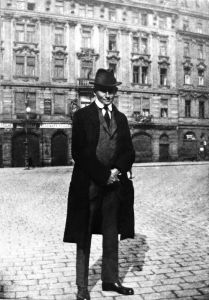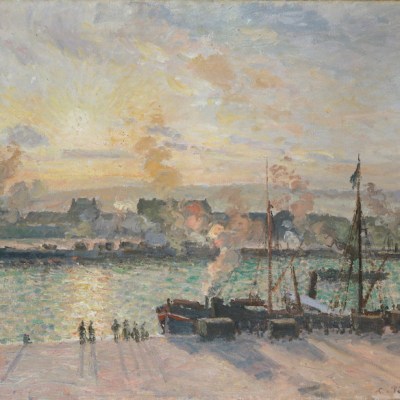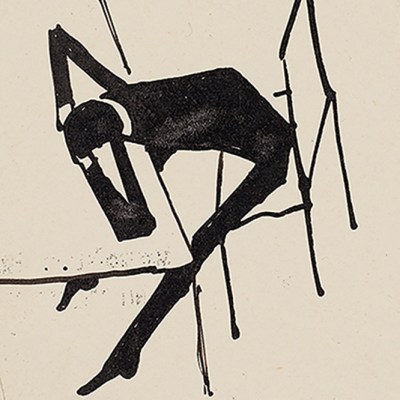Caspar David Friedrich
No painter is as closely identified with German Romanticism as Caspar David Friedrich – and to mark the 250th anniversary of his birth there is a nationwide programme of events and exhibitions in his home country. The festival year will be opened on 20 January by the culture minister Claudia Roth in St Nicholas’s Cathedral in the Pomeranian town of Greifswald, where Friedrich was baptised in 1774 – but the Hamburger Kunsthalle has already got the ball rolling. ‘Caspar David Friedrich: Art for a New Age’, opened on 15 December and brings together 60 paintings, 100 drawings, works by Friedrich’s contemporaries and by contemporary artists for whom his visions of nature resonate in our era of climate crisis. Coming up are major surveys dedicated to his landscapes at the Alte Nationalgalerie in Berlin (19 April–4 August), and to the arc of his 40-year career in Dresden, where he moved in his mid twenties, at the Albertinum and Residenzschloss in that city (24 August–5 January 2025). These three museums hold the lion’s share of his work – and since they are pooling resources with ‘extensive reciprocal loans’, these exhibitions ought to inspire a little wanderlust in even the most reluctant city-hopper.
The Great Enclosure (1832), Caspar David Friedrich. Albertinum, Dresden. Photo: Jürgen Karpinski; © © Albertinum, Staatliche Kunstsammlungen Dresden

First Manifesto of Surrealism
‘The mere word “freedom” is the only one that still excites me.’ So wrote André Breton in his First Manifesto of Surrealism, published in October 1924. Surrealism is sometimes thought of as an art movement, but at heart it was a way of thinking and of being – of breaking the shackles of the imagination and allowing the unconscious free rein. The enormous influence of Surrealism has been underscored in recent years with the last edition of the Venice Biennale – and this year, the 100th since the publication of the manifesto, the philosophy will be in the spotlight once again, with exhibitions including a major survey of André Masson at the Centre Pompidou-Metz (29 Mar–2 September).
Panic (1963), André Masson. Centre Pompidou, Paris. Photo: © Bertrand Prévost – Centre Pompidou, MNAM-CCI /Dist. RMN-GP

First Impressionist Exhibition
It is one of the greatest origin stories in modern art. In Félix Nadar’s top-floor flat at 35 Boulevard des Capucines, the Société Anonyme des Artistes – a group including Monet, Degas, Renoir, Morisot, Pissarro and Cézanne – opened its first exhibition on 15 April 1874, in riposte to the official Salon from which many of these artists had been excluded. A satirical review in Le Charivari picked out Monet’s Impression, Sunrise – ‘what freedom, what ease of workmanship! Wallpaper in its embryonic state is more finished than that seascape’. It was sarcastically titled ‘Exhibition of the Impressionists’ – a name that stuck fast. A hundred and fifty years on, the Musée d’Orsay and the National Gallery of Art have joined forces to present a major examination of this moment, with paintings included in both the First Impressionist Exhibition and the official Salon of that year; the exhibition runs in Paris from 26 March–14 July and in Washington, D.C., from 8 September–19 January 2025.

National Gallery, London
On 10 May 1824, the National Gallery opened to the British public – though in a form quite unrecognisable as the institution it is today. It was housed in the townhouse at 100 Pall Mall of the late merchant John Julius Angerstein, from whose estate the government had purchased 38 paintings – which then comprised its entire collection. Subsidence soon caused it to be briefly moved down the road to 105 Pall Mall, which Anthony Trollope called ‘a dingy, dull, narrow house, ill-adapted for the exhibition of the treasures it held’ – the comparison with the Louvre was a source of national embarrassment, at least until the gallery moved to its present home in Trafalgar Square in 1838. Marking 200 years since these inauspicious beginnings, the anniversary programme includes major shows on the paintings of Van Gogh (14 September–19 January 2025) and the Sienese trecento (running from 8 March 2025–22 June 2025, though promoted under the NG200 banner). Masterpieces from the collection will be loaned to 12 regional museums across the country for displays opening simultaneously on 10 May. The gallery’s NG200 capital projects – including the ambitious, though controversial, redesign of the Sainsbury Wing designed by Denise Scott Brown and Robert Venturi – are slated to open in May 2025.
The National Gallery in March 2020. Photo: Dan Kitwood/Getty Images

Morgan Library & Museum
Franz Kafka in front of the Kinsky Palace in Prague in 1886–1906. Photo: Keystone-France/Gamma-Keystone via Getty Images

It is 100 years since J.P. Morgan, Jnr. opened the Pierpont Morgan Library to the public, full of the rare books and manuscripts he had been bequeathed by his father, with the request that it be made ‘permanently available for the instruction and pleasure of the American people’. Both its collections and the public programming have burgeoned over the last century and there is no sign of a slowing down. A centennial campaign hopes to raise $50m towards its endowment and infrastructure. The celebratory programme includes shows of recent acquisitions in photography (26 January–26 May), the books of Beatrix Potter (23 February–9 June 2024), an extraordinary collection of music manuscripts relating to the Ballets Russes (28 June–22 September) and a show that marks a significant literary anniversary. From 22 November–13 April 2025, the Bodleian Library’s extensive holdings of letters, diaries and photographs relating to the work of Franz Kafka, who died in 1924, will be displayed publicly in the United States for the first time. Look out for the original manuscript of The Metamorphosis.
Other anniversaries to watch out for…
In January, the National Galleries of Scotland in Edinburgh opens a survey of ‘Paolozzi at 100’, reflecting on the legacy of the Pop-art pioneer (and Edinburgh native) who was born in March 1924; highlights include the designs for individual tiles of his vast mosaic at Tottenham Court Road tube station.
Artists for whom 2024 will bring up big anniversaries which, perhaps surprisingly, aren’t being marked by major exhibitions – at least, not any that have been announced yet – include George Stubbs (born 1724), Jean-Léon Gérôme (1824) and Mariano Fortuny (died 1874).
It’s 150 years since Modest Mussorgsky composed his Pictures at an Exhibition – a piano suite of 10 works, orchestrated to sublime effect by Ravel in 1922, that comprises a tour of a display of paintings by his friend Viktor Hartmann; it remains one of the most sustained and rewarding translations of the experience of looking at art into music. Fernand Léger and the American film-maker Dudley Murphy saw their Dadaist Ballet Mécanique premiered in Vienna in September 1924 – a landmark moment in experimental film.
In the same month, David Sylvester was born – the critic who did more than any other to cement the reputations of Francis Bacon, Lucian Freud, Alberto Giacometti and Joan Miró in the United Kingdom. Finally, Gertrude Stein was born 150 years ago on 3 February – perhaps the Musée du Luxembourg might have thought to let its exhibition on Stein and Picasso, ‘The Invention of Language’, run a little longer, though there’s still time to catch it before it ends on 28 January. The poems and books are of course there to be read or reread at any time. Stein’s Autobiography of Alice B. Toklas – though it offended everyone from Hemingway to Matisse on publication in 1933 – remains essential for anyone hoping to grasp the modernist moment in Paris.


